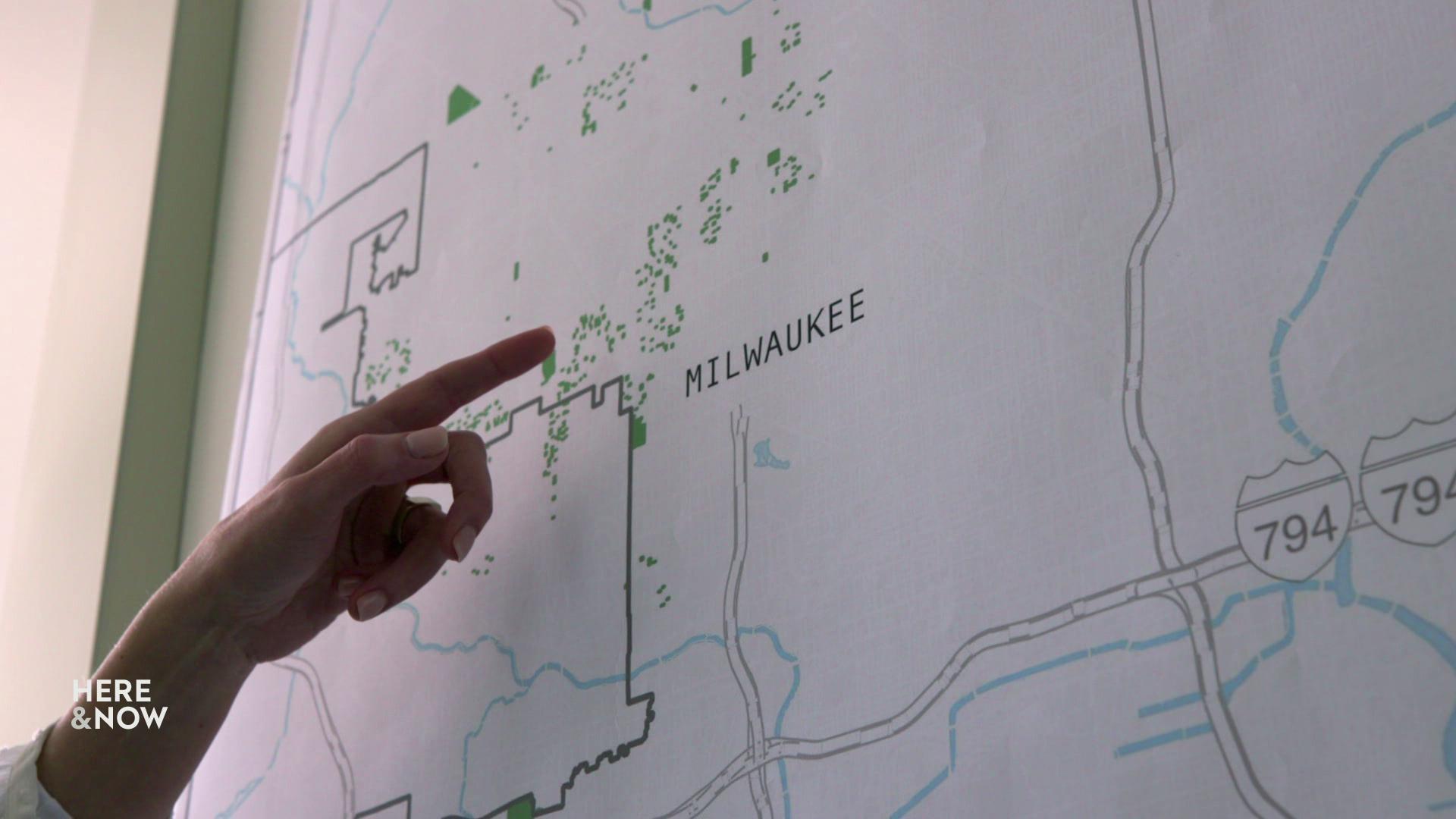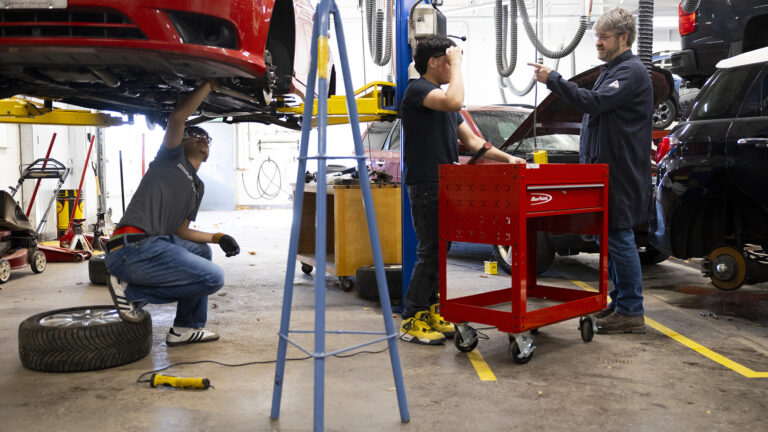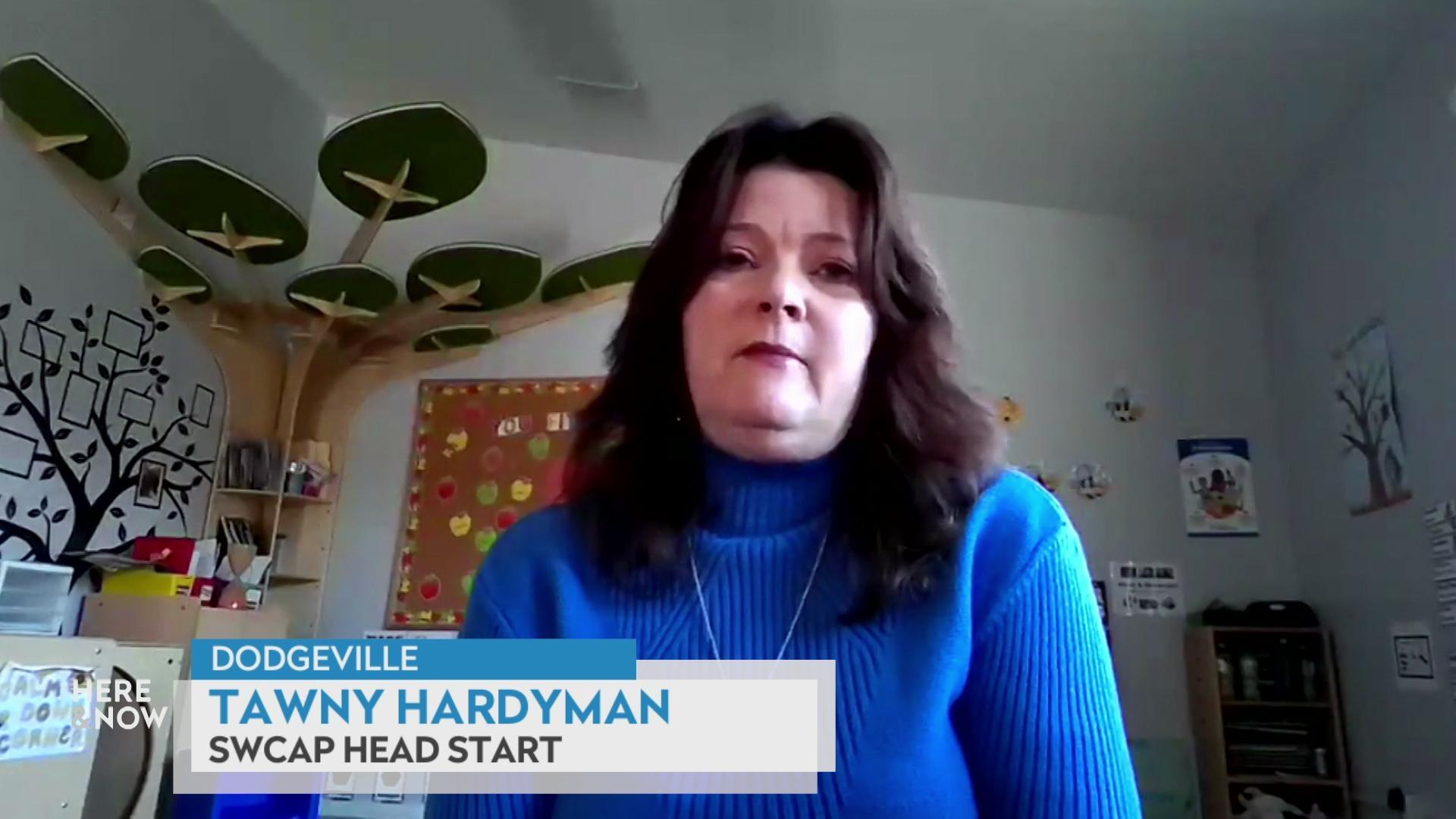Milwaukee Public Schools confronts dangerous lead problem
As a new school year begins, Milwaukee Public Schools continues efforts to clean up a widespread lead contamination problem in its numerous older buildings and continue to test students for poisoning.
By Steven Potter | Here & Now
August 14, 2025 • Southeast Region
Milwaukee Public Schools continues to clean up a widespread lead contamination problem
“So they’ll come back before school starts and make sure that they get every single spot. This is a constant upkeep — that’s what makes it difficult in these older buildings,” said Brenda Cassellius, superintendent of the Milwaukee school system.
Since her first day on the job in March 2025, Cassellius has faced the daunting task of how to manage a significant health risk facing the school district’s more than 60,000 students. The problem is lead contamination, specifically chipping lead paint and lead dust, and the extent of the problem is very widespread.
“So we have to assume that the schools built prior to 1950 – when there was the understanding that there’s lead in paint happened – that those schools have lead in them,” Cassellius said.
Cassellius said Milwaukee Public Schools was using lead paint until it was federally outlawed in 1978. That means a majority of its schools are considered contaminated.
“That’s about 106 schools,” she added.
The lead crisis began when a student at the Golda Meir elementary school tested positive for lead poisoning in January. That’s when the City of Milwaukee Health Department got involved.
“We’re very concerned about developmental delays and cognitive regulation. So, if a child has significant lead poisoning, it can cause behavioral issues and make them more impulsive,” said Mike Totoraitis, the department’s commissioner.
“It can cause permanent brain damage that has significant long-term effects. So this is why lead is regulated at the federal level,” he continued, “and why we’re taking this so seriously here in the city.”
Early in the spring of 2025 – after another Milwaukee Public Schools child tested positive for lead poisoning – the health department ordered the school district to come up with a lead abatement and management plan to address the most contaminated schools and the student populations most in danger of lead poisoning.
“The district was required to produce a lead plan to ensure that we could get back to compliance with the lead standards that are set forth for any school across the state of Wisconsin,” Totoraitis explained.
Around 600 students have been tested as of August, he said, and the testing of students continues.
“This is an ongoing effort that’s really going to span into the coming years to ensure that we keep eyes on the students at MPS and frankly, across the city,” Totoraitis said.
Part of the school district’s plan released in April included temporarily closing several schools and relocating the students to another school while cleaning and repainting was done. Over the spring and through summer, school officials say they’ve made progress but still have dozens more schools to clear.
“We’re hoping that we’ll have our schools finished and tested by the Sept. 2 school start date,” Cassellius said.
“It’s a fluid process. So, as we do our screenings and ensuring that the schools are ready to reopen, we’ve uncovered, ‘Hey, you actually need to re-clean this room or you need to restabilize this surface,’ and that adds more time,” explained Totoraitis.
Despite all of their efforts so far, MPS officials say there’s still a lot more work to do with cleaning and painting the schools to get them to a standard that’s safe for students. And once the schools are stabilized, additional maintenance and regular inspections will be needed to keep them that way.
“So far, we think it’s going to cost somewhere around $25 million to do,” Cassellius added. “Then there’s the ongoing cost. We put an additional $16 million of ongoing investments within our facilities department to add custodial support — to add painters, to add plasters, to add lead abatement or lead inspectors to the team to make sure that we’re keeping up with our lead action plan.”
Those are costs that Milwaukee Public Schools is having to cover on its own.
“We have not received any help from the state,” said Cassellius.
Still, some parents and community members are concerned that not enough is being done fast enough or thoroughly enough to keep their kids safe. One group wants more transparency about what’s being done.
“It shouldn’t have been a problem in the first place,” said Shannon Pahlicek, a parent with Lead-Safe Schools Milwaukee.
“It’s an issue of aging buildings is a big part of it, but it’s also an issue of deferred maintenance, which is a multifaceted problem,” she said. “The administration’s job is to know what’s going on in the schools, and so the idea that there was as much degradation in the paint as there was and as much dust in the school as there was, I think that’s disheartening.
Pahlicek emphasized impacts on students.
“No child deserves to be unsafe on day one,” she said. “They’ve got to do what they’ve got to do, but the faster the better, but you want it done right.”
Cassellius said she understands parents’ concerns.
“We’re working as fast as we can with all urgency and no expense spared,” she said. “So I’ve told my team, ‘If you need additional painters, we will buy them, if you need additional plasters, we will buy them.’ The only thing that I can’t give them more of is time — we are up against a deadline on Sept. 2 to get this work done.”
Pahlicek remains skeptical.
“You can’t make a mistake like this and then ask the public to just trust you. You have to be willing to build that trust by being completely transparent,” she said.
Regardless of how much cleaning and repainting is done, one fact remains that these schools still have decades of lead paint inside them. So, the only way to truly eliminate this risk, MPS officials say, is to rebuild.
“I think that we need to do some either major renovations or new builds, and we need a significant 100-year plan in Milwaukee Public Schools,” Cassellius said. “We have to make some hard decisions as a community about the investments we want to make in our children’s future.”
 Passport
Passport











Follow Us